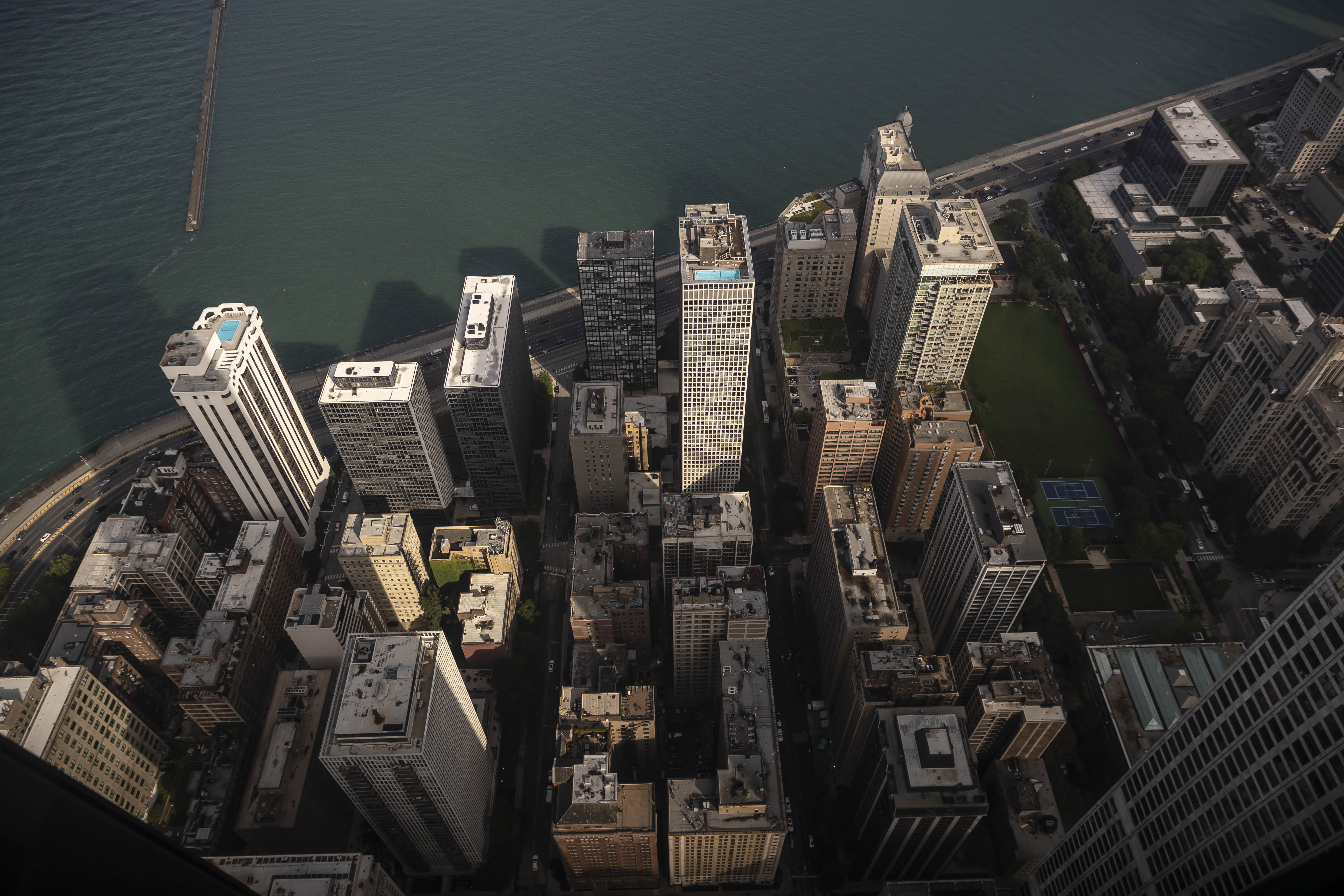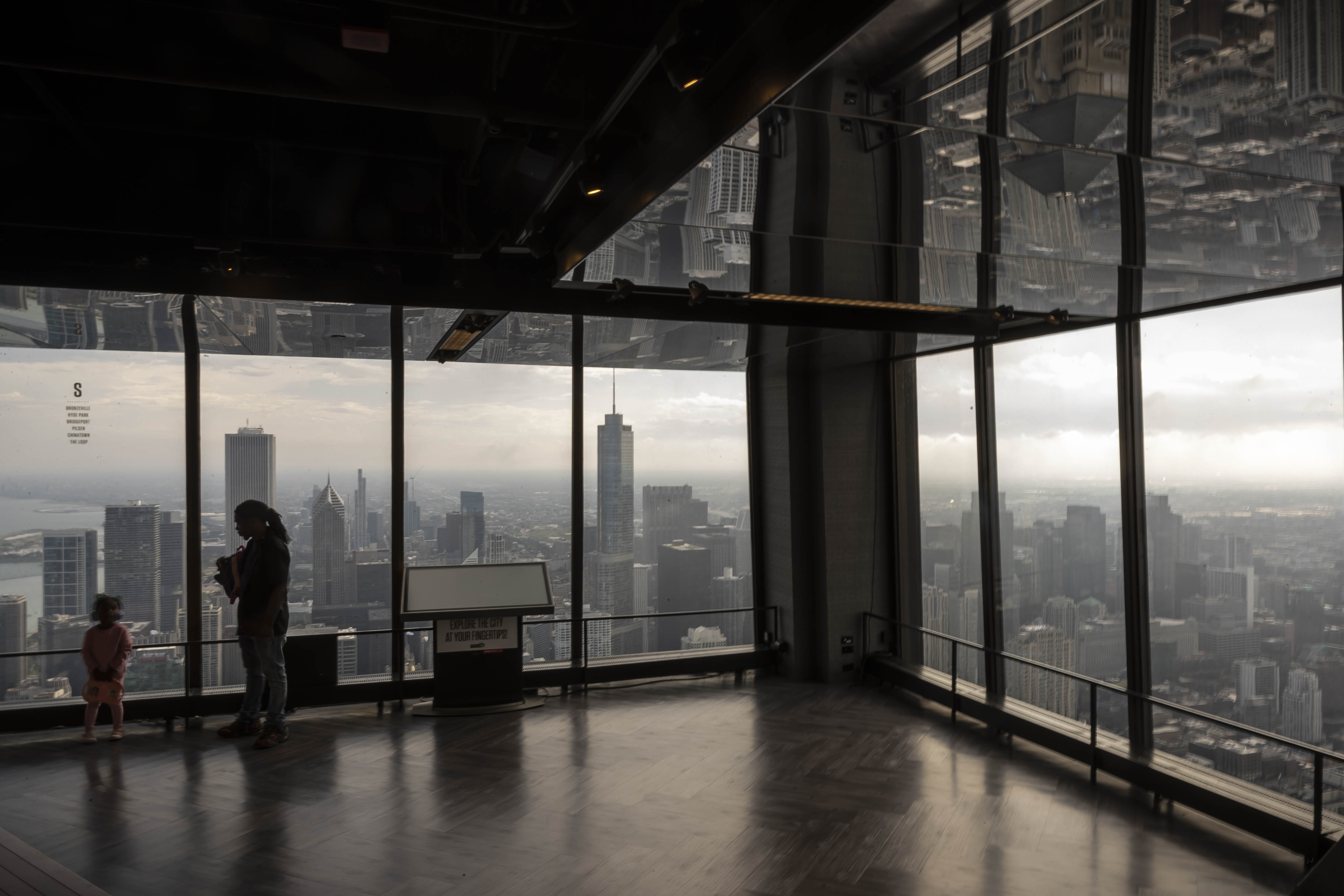Editor’s note:This story is part of a series of “What’s That Building?” stories that focus on Chicago’s most iconic buildings.
X marks the sides of one of Chicago’s most familiar high-rises: the elegantly tapered, 100-story 875 N. Michigan, formerly named the John Hancock Center.
Visually, those Xes climbing up the tower’s four sides combine with the structure’s trapezoidal shape and give the high-rise a memorable presence on the skyline. Functionally, the Xes do so much more.
The Xes are part of the transformative change structural engineer Fazlur Rahman Khan and architect Bruce Graham, both working for the Chicago firm Skidmore Owings & Merrill, brought to the design of tall buildings in the mid-1960s. In that way, 875 N. Michigan Ave. really is an icon of Chicago architecture, a field that has exported so many innovations to other cities and countries.
A history lesson on the building’s name: The John Hancock Life Insurance Company, which built the tower and kept its name on it for half a century, in 2018 specifically requested its name be removed from the North Michigan Avenue tower. This was five years after the company’s naming rights deal expired. So while diehards may insist on continuing to call the building some version of “the Hancock,” they’re not doing anybody any favors. The Boston-based life insurance company didn’t request help keeping the name alive. The building is now called 875 N. Michigan.
The Hancock name remains an interesting part of the tower’s origin story, which involves not only Khan and Graham but also a brash developer named Jerry Wolman.

Wolman was a successful real estate developer in Washington, D.C., who had recently bought his favorite NFL team, the Philadelphia Eagles, when he swept into Chicago in February 1965 with news that he was going to build a 100-story tower at Michigan and Chestnut for $95 million. Construction began in December 1966, but Wolman was out after selling his interest to his major funder, the John Hancock Company.
The 22 months in between make up a fascinating chapter in Chicago’s architectural history.
Prior to the February 1965 announcement, Khan, Graham and Wolman had been working together on a design for the site. Originally Wolman wanted to do two 70-story towers, one for apartments and the other for offices and retail.
But Graham, the architect, told Wolman two buildings wouldn’t work well. The Casino Club hemmed them in and people living in the apartments wouldn’t want to be looking straight into the windows of the office building, the architect said. So, Wolman suggested combining the two buildings.
At the time, high-rises weren’t built for mixed uses. Today, the building’s 100 floors are utilized for a myriad of purposes: retail on the bottom, parking on floors 4 to 12, offices on 13 to 41, condos on 44 to 92 and the observatory, called 360 Chicago, on 94. Views from the observatory, about 1,000 feet off the ground, are astounding, showing the gorgeous Lake Michigan shoreline and the ample blue water.
Until Thursday there was also a restaurant, The Signature Room, on the 95th floor and the Signature Cocktail Lounge on the 96th.
They closed after 30 years, Crain's Chicago Business reporter Dany Ecker reported. Rick Roman and Nick Pyknis, the venues' owners, posted a message on the door announcing the closing and sent an email to employees with the same news. They blamed the closing on the slow comeback of Michigan Avenue after COVID, as well as safety issues in the area.
"These issues are negatively impacting the health of our restaurant and are issues that are completely out of our control," they wrote in the email, according to Ecker.


Khan, the structural engineer, was from Bangladesh, where some biographies say he got the idea for building high-rises as tubes from looking at how strong bamboo is: a rigid tube on the outside that can grow tall without any support inside. He wanted to use the outside walls of a building to provide all the structure. Khan’s tube innovation worked on two Chicago high-rises: the Brunswick Building (completed in 1964) and the Dewitt Chestnut Apartments (completed in 1965).
The John Hancock was going to be 22 stories taller than those two combined. Khan used the Xes to eliminate the need for support columns inside the tube and to brace against lateral loads such as wind.

So they start building an innovative new tower and within several months, a problem develops. The caissons, which are giant underground supports for a high-rise, showed signs of weakness because the structure was tilting. The builder was trying to save time by doing two things at once: drilling the caissons down into the bedrock and pouring concrete into the caisson. Pull the drill out, and the concrete settles into the void left behind.
Construction shut down for four months while five caissons were redone. That four months caused a financial catastrophe for Wolman, and according to his New York Times obituary 47 years later, “was the start of the unraveling of his fortune.” He had to sell his share of the Philadelphia Flyers, an NHL team he helped found, and in 1969 he sold the Philadelphia Eagles after owning the team for six years.
John Hancock, who had been a lead financial partner on the project, took over and finished the building.
Dennis Rodkin is the residential real estate reporter for Crain’s Chicago Business and Reset’s “What’s That Building?” contributor. Follow him @Dennis_Rodkin.
K’Von Jackson is the freelance photojournalist for Reset’s “What’s That Building?” Follow him @true_chicago.



